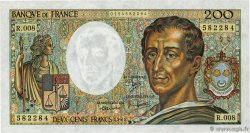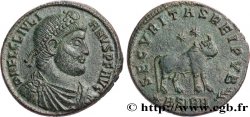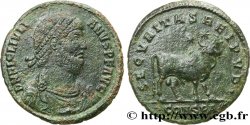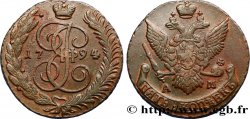正面
正面的说明书 Cavalier au pas à droite qui couronne son cheval et le tient par la bride, couronné par Niké placée derrière ; inscription sous le cheval.
正面铭文 SIM
背面
背面的说明书 Taras nu, chevauchant un dauphin à gauche, tenant un trident vertical de la main gauche et un canthare de la main droite tendue ; au-dessous, les flots.
背面铭文 TARAS/ tHR
背面的翻译 (de Tarente).
历史细节
CALABRIA - TARAS
(4th - 3rd century BC)
Taranto, founded around 706 BC. -VS. by the Parthenopeans, was the only colony of Sparta. Indeed, according to mythology, the city was founded by Phalanthos, on the orders of the oracle of Delphi, not far from the mouth of the Taras river.. Another ancient tradition tells how the city was founded by Taras who was the son of Poseidon and the nymph Satyra. He was saved during a shipwreck by a dolphin who deposited him near the future city and his name designates the city. It turned out that the two heroes were confused. Taranto was the only important city in this region called Calabria by the Romans and districts of Messapia and Iapygia by the Greeks. The new colony quickly prospered and became one of the most important ports of the Western Mediterranean thanks to the many advantages, linked to its geographical location, to the richness of its hinterland with cultivable land, renowned breeding, the work of wool. The Tarentines were famous hair breeders and trainers. But it was also famous, thanks to its vast secure port which allowed it to establish fruitful relations with its neighbors and made it one of the main ports of the Western Mediterranean.. The city was also recognized for the quality of its purple, produced thanks to the collection of murex, a shell allowing to obtain the very particular coloring. The political system of Taranto must have been modeled on that of its metropolis Sparta and Herodotus (I, 36) reports a king, a contemporary of Darius I (521-486 BC).. -VS. ). The cult of Apollo Hyakinthos was celebrated there and its Spartan origin is undeniable. From 380 BC. -VS. , the destinies of Taranto found themselves in the hands of Archytas of Taranto (460-360 BC. -VS. ), Pythagorean philosopher, friend of Plato, mathematician, astronomer, politician and general who was placed seven times at the head of his city. It is given for the inventor of the screw, the pulley, the rattle and the kite. Horace dedicated an ode to him. The Panhellenic foundation of Thurium in 443 BC. -VS. had given rise to a conflict which was to oppose Taranto to Athens for more than thirty years from 436 BC. -VS. The two rival cities had ended up founding Heraclea in 432 BC.. -VS. , nevertheless under Tarentine influence. The Tarentines ended up imposing themselves on the cities of Métaponte and Siris. Archytas, in the first half of the fourth century BC. -VS. , became the strategist of the Italiote confederation whose capital was Heraclea and which included, in addition to Taranto, Metaponto and Thurium, Crotona, Velia and Naples. This period of Tarentine hegemony ended with the death of Archytas and was the starting point for the interventions of mercenary generals such as Archidamos of Sparta, Alexander the Molossus or Pyrrhus of Epirus.. Taranto had to fight against the Lucanians and appealed in 345 BC. -VS. to Archidamus, king of Sparta. The latter tried to contain the progression of the Lucanian tribes. Unfortunately, Archidamos was defeated and killed at the Battle of Mandurias in 338 BC.. -VS. The death of Archidamos forced the Tarentines to find a new ally to contain their turbulent neighbors. They appealed to Alexander the Molossian, king of Epirus and brother-in-law of Alexander III the Great of Macedonia. Arriving in southern Italy, Alexander the Molossus had to fight against the southern Italian tribes of Lucania and Apulia, eager to build a kingdom in Magna Graecia.. After the death of Alexander of Epirus (330 BC. -VS. ), the Tarentines continued to face the tribes of Lucania and Bruttium to which were added the Romans. This time, they addressed themselves to Kleonymos of Sparta to deliver them from this double danger.. Taranto and Rome had signed a naval treaty in 303 BC. -VS. on the neutrality of the Tarentines in exchange for the respect of the territorial integrity of their city by the Roman armies. Between the departure of Kleonymos from Sparta in 302 BC. -VS. and the arrival of Pyrrhus, king of Epirus twenty years later, the history of Taranto and its territory remains poorly known with many gray areas on the historical and monetary levels. The intervention of the Epirote monarch was to mark the beginning of the decline of the Tarentine city.. Following the arrival of Pyrrhus in Italy in 281 BC. -VS. , Consul L.. Aemilius Barbula devastated the territory of the Tarentines after the destruction of a Roman squadron in the Gulf of Taranto. Pyrrhus, thanks to his elephants and to general surprise, won the indecisive battle of Heraclea in 279 BC.. -VS. hence the expression "Pyrrhic victory" which is equivalent to a victory which leaves the winner so exhausted that a defeat would not have weakened him any more. After the victory of Ascoli in 279 BC. -VS. , Pyrrhus failed to achieve a decisive victory over the Romans, became angry with his Greek and Syracusan allies, and was finally defeated at Benevento in 275 BC.. -VS. He retired to Epirus, where he was eventually assassinated. After the departure of Pyrrhus, Taranto submitted to Rome. In 272 BC. -VS. , she surrendered, after a long siege, to the consul Lucius Papirius Cursor. Under the leadership of Consul Spurius Carvilius Maximus, Taranto became an allied city of Rome, it experienced a great period of prosperity which lasted until the Second Punic War (221-202 BC).. -VS. ). Taranto, an ally of Rome at first, finally rallied to Hannibal in 213 BC. -VS. The Roman garrison, taking refuge on the acropolis of Taranto, resisted for five years. The city was finally submitted by Fabius Maximus in 209 BC. -VS. who reduced most of the population to slavery, thirty thousand people according to Livy (XXVI, 39).







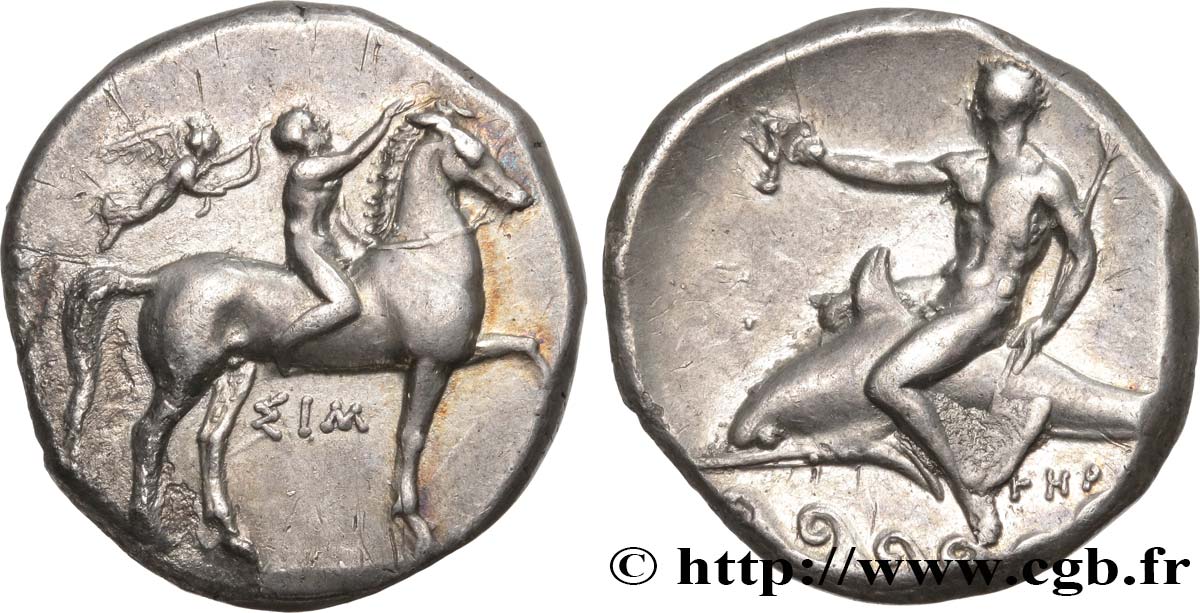
 对产品描述纠错
对产品描述纠错 打印
打印 分享我的选择
分享我的选择 提问
提问 Consign / sell
Consign / sell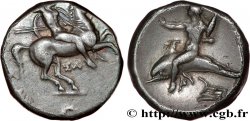
 产品介绍
产品介绍